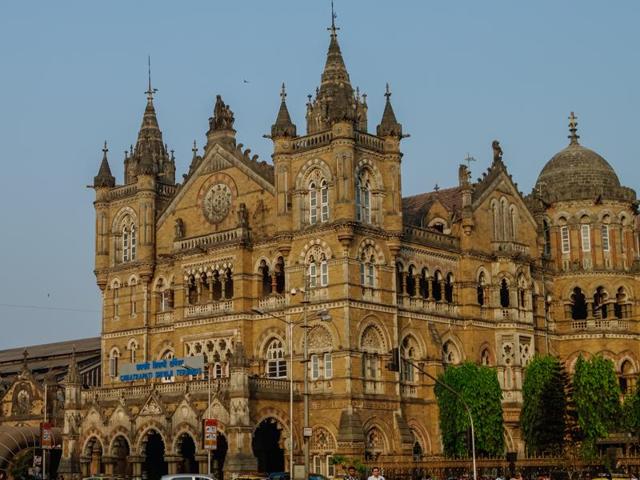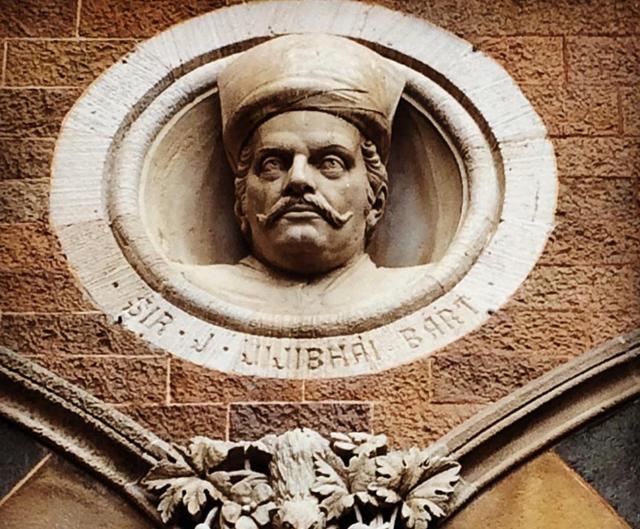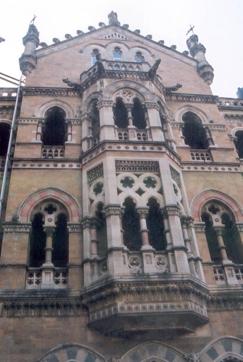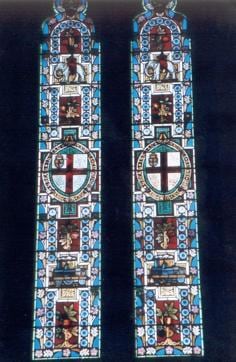Insider’s guide to… Chhatrapati Shivaji Terminus
CST, the birthplace of Indian Railways, turns 129 this year. We look at its fascinating design
Would you believe the British government finalised the rough sketch of how the station should look, through a competition? The winning entry was a watercolour painting by Axel Haig [Swedish illustrator] of VT’s façade as we see it today,” says Vikas Dilawari. Dilawari is a conservation architect and the recipient of the UNESCO Asia Pacific Award of Excellence 2005, for his work on the conservation of Dr Bhau Daji Lad Museum, Mumbai.

We meet Dilawari at the iconic Chhatrapati Shivaji Terminus railway station on a rainy evening. “This building houses some of the most detailed motifs carved into stone. The motifs on the pillars and the roof were hand-carved by Indian sculptors in the late 1800s,” says Dilawari.

He points out that the original architectural designs were shipped from London when the construction was underway in India. “The British were very particular about the building’s design. They had almost no faith in the creativity of Indian craftsmen, and delivered specific instructions to simply copy the designs that were sent over,” says Dilawari.
This year, the grand train station and the administrative headquarters for Indian Railway’s Central belt, completes 129 years, and 12 years of being declared a UNESCO World Heritage Site.
DID YOU KNOW?
>> The erstwhile Victoria Terminus opened in June 1887, to commemorate 50 years of Queen Victoria’s reign. Located at Bori Bunder, the structure was specifically built as a railway station, courtesy the strategic location: along the Eastern seashore, close to the storehouses for imported and exported goods from Mumbai.

>> Statue of progress: The statue atop the dome is that of the Lady of Progress. It was established to symbolise the coming of railways as a positive sign for Indian trade and commerce. Built in Mumbai — a rich port that attracted many travellers and merchants — the coming of railways was viewed as a step towards gaining economic dominance.
ALSO READ: Insider’s Guide to... Fort
>> The Great Indian Peninsular Railway (GIPR) built the city’s first railway terminus, called Bori Bunder, where CST stands today. The GIPR was the railway division of the East India Company. In 1853, it operated the historic passenger train in India from Bori Bunder to Thane, establishing the birth of the Indian Railways.
>> Since the structure has been a functioning railway headquarter from inception, the cabins allotted to the Indian Railway officials have remained constant over the last 129 years. For instance, the Chief Engineer of the Central Indian Railway has occupied the first cabin, on the first floor in the South West Wing, since 1887.

>> Faces on the wall: The façade of CST has round niches carved into the outer surface of the wall. They feature busts of the men who contributed to building the station. For instance, Sir Jamsetjee Jeejeebhoy was one of the most prominent businessmen and philanthropists in the erstwhile Bombay Presidency. The word Bart (carved into the bust) signifies the title of Baronet, given to distinguished subjects of the British Empire in India, by Queen Victoria.
>> The architecture, designed by British architect, Frederick William Stevens, is inspired by the design of St Pancras Railway Station, London, and the Reichstag building (German parliamentary building), Berlin. Tnterestingly, the latter was still under construction when Stevens drew inspiration from it, and opened seven years after CST, in 1894.
>> CST is a rectangular building, or a block. The building is three-storied with only two main corridors that stretch across each floor, end to end. The front corridor, the one that faces the Brihanmumbai Municipal Corporation, is approximately 13ft wide. It was designed in that manner to protect the inner section of the floor from getting wet in the rain. The back corridor, which faces the railway platform, is 8ft wide.

>> Oriel windows: The main facade of CST features four Oriel windows (characterised by the protruding form: it projects from the main wall of a building but does not reach the ground). These type of windows are mostly seen in Islamic architecture, as these windows could provide an area in which women could peer out and see the activities on the street outside their homes while remaining invisible
ALSO READ: Insider’s guide to... Colaba
>> The main ticket hall at CST is an example of the Gothic Revival architecture from England, circa 1740. It is characterised by decorative patterns on the roof, with high, pointed domes. Called the Star Chamber, the ticket hall features a turquoise roof with wooden panels. The wood used is Burma teak, and the design was intended to resemble the interiors of a cathedral.
>> CST was the first building in Mumbai to be built with a dome. The General Post Office building (behind CST) and the BMC building came up in the years succeeding the completion of CST. The dome is situated right above the main lobby of the administrative building.

>> Situated in the main lobby, on a single rock-cut, granite pillar, the coat of arms of CST is a lion holding up a shield divided in four sections. The upper two sections feature a train on the right, and an elephant on the left. The train is symbolic of development, that the British expected to bring in India; the elephant signifies a traditional royal Indian mode of transport. The bottom left corner has the emblem of the East India Company. The bottom right section features a Cross.





